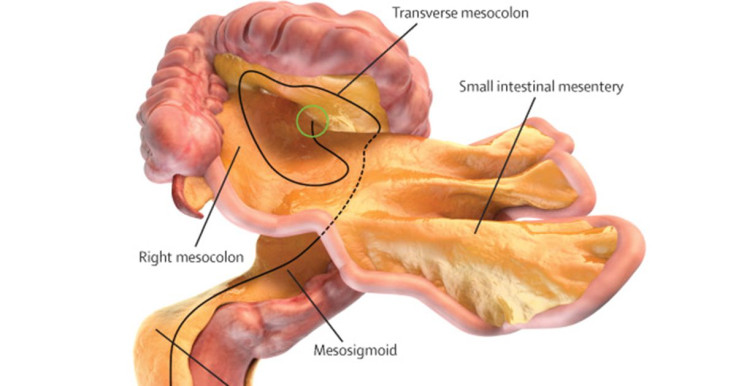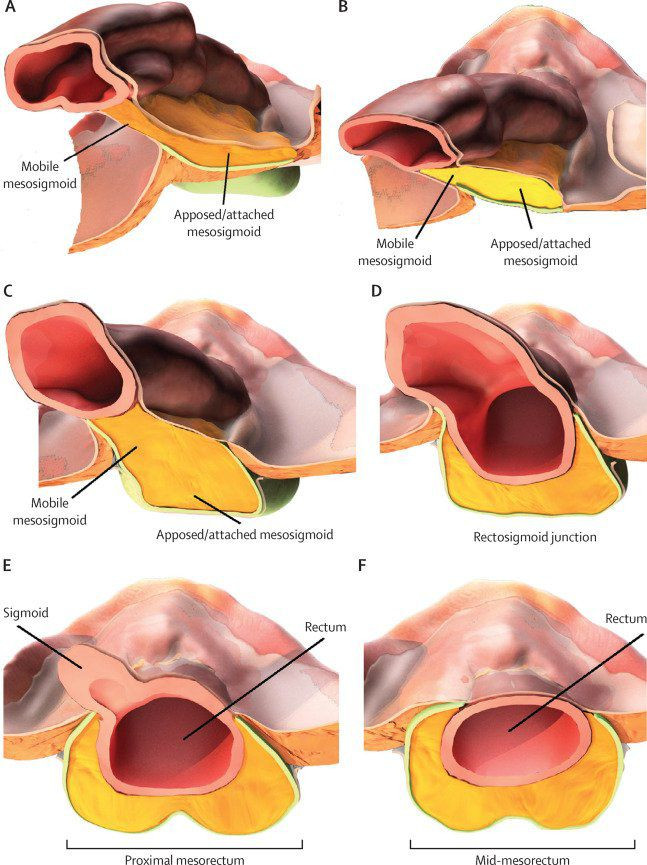A new organ has been identified in the human body – here's how doctors missed it for centuries
Leonardo da Vinci first noticed the body part in the 1500s, but its true structure has only just been officially recognised.
For centuries it was thought that the mesentery was a fragmented collection of folds in the membrane lining the abdominal cavity. But now doctors have said that it is a distinct, continuous organ, which could change the way diseases of the digestive tract are understood.
Leonardo da Vinci was the first to characterise the mesentery in a drawing from about 1508. One of the first anatomical textbooks to include the mesentery as a fragmented structure was by the anatomy Henry Gray, in the first edition of the well-known medical textbook Gray's Anatomy.
The puzzle started to come together when doctors figured out its real structure in the body, which is a continuous spiral shape.
Previously doctors thought that the mesentery was just a collection of small, fragmented folds in the peritoneum, until J Calvin Coffey, a professor of surgery at the University of Limerick in Ireland, published a paper in 2012 arguing otherwise.
In that study, more than 100 patients had parts of their intestines removed due to inflammatory bowel disorder. It was only when these large sections of bowel were removed entirely that the structure of the mesentery became clear, Coffey told IBTimes UK.
"You don't tend to see the overall bigger picture, until you're taking out entire colon," he says. "Only when you're doing that and start peeling away the layers in a particular manner that you see the structure is in fact continuous."

Even when performing open surgery on the intestines, the structure was hard for surgeons to spot. "When you operate on the right hand side, you don't really tend to see the left hand side and vice versa, if you operate on the left you just don't see the right."

This discovery makes the mesentery eligible to be seen as an organ in its own right, Coffey writes in a new paper published in The Lancet Gastroenterology and Hepatology. A new field of medical research focused on the organ is necessary to understand it, Coffey says. The field of mesenteric science will increase understanding of the organ and the diseases related to it.
Some conditions that involved a twisted gut and that can be fatal are due to unusual development of the mesentery, Coffey says. "Unless you understand its structure then you can't understand certain diseases." For example, a condition known as malrotation or nonrotation can happen when the mesentery doesn't attach properly to the back wall of the abdomen, allowing part of the intestine to twist. This can cut of blood supply and the intestine can become gangrenous.
"If you understand the conformation of the mesentery then you understand it's a simple matter of fixing it in its proper conformation and you prevent the catastrophic consequences."
As well as having a structural role, the mesentery is thought to play a role in the immune system and as a store for abdominal fat.
Gray's Anatomy was updated in 2016 to reflect the discovery of its true structure.

© Copyright IBTimes 2025. All rights reserved.






















